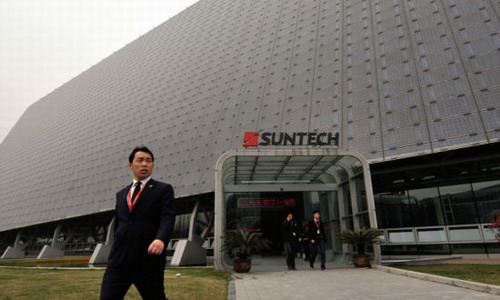 China's photovoltaic industry in the United States in the past two years can be described as blocked. The U.S. Department of Commerce announced the "double reverse" punitive tariff preliminary tariff rate on China's solar photovoltaic products. At that time, "the use of batteries outside China's domestic areas for production of battery panels" was not within the scope of the taxation. On October 10th, the US Department of Commerce will announce the final ruling rate, and the industry estimates that it will not rule out the loophole of “blocking†the Ministry of Commerce. For the Hebei photovoltaic giant, this means that there is a less roundabout option. In addition, there is a possibility that the US anti-subsidy tax will increase.
China's photovoltaic industry in the United States in the past two years can be described as blocked. The U.S. Department of Commerce announced the "double reverse" punitive tariff preliminary tariff rate on China's solar photovoltaic products. At that time, "the use of batteries outside China's domestic areas for production of battery panels" was not within the scope of the taxation. On October 10th, the US Department of Commerce will announce the final ruling rate, and the industry estimates that it will not rule out the loophole of “blocking†the Ministry of Commerce. For the Hebei photovoltaic giant, this means that there is a less roundabout option. In addition, there is a possibility that the US anti-subsidy tax will increase. The anti-dumping and countervailing penalties imposed by the U.S. Department of Commerce in March have reached 35% for most Chinese PV companies.
The above-mentioned “dual†tariffs were levied on the 90-day retrospective basis. Hebei photovoltaic giants such as Baoding Yingli and Ningjin Jingao have already lost hundreds of millions of yuan for this and their operating losses have further expanded.
However, 35% of the "double reverse" preliminary tariffs are not staunch. According to the procedure, the U.S. Department of Commerce will finalize the ruling today.
With regard to the "double reverse" initial discretionary tax rate, the political circles of the United States political community have subsequently expressed controversy. The reporter noted that at the end of June, the United States Department of Commerce spokesman Tim. Truman told U.S. media that during the investigation, the Ministry of Commerce found that Chinese PV companies also received other government subsidy programs, and the Ministry of Commerce will revise the preliminary taxation rate for countervailing duties.
According to an internal document of the US Department of Commerce on June 22, the countervailing duty of Wuxi Suntech Power will increase from 2.9% to 3.44%, and Changzhou Trina Solar will increase from 4.73% to 5.81%, due to other Chinese PV exports. The anti-subsidy tax faced by the business is calculated based on the average values ​​of Suntech and Trina Solar. As a result, Hebei PV companies such as Yingli and Jingao will also face higher countervailing duties.
After the U.S. Department of Commerce announced in March the "double reverse" preliminary ruling, Chinese industry people soon discovered that a "loophole" and "double reverse" penalty tariff is not applicable to solar panels produced in mainland China outside China's mainland. This means that Chinese companies can set up factories abroad to produce batteries, or purchase foreign batteries, and then use labor cost advantages in mainland China to weld and assemble solar panels.
It can be noted that some high-level PV companies in China have indicated to the media that they will use this article to seek to reduce the loss of export profits caused by the US “double reverseâ€.
However, this "loophole" quickly attracted the attention of the U.S. solar industry and parliamentarians. At the end of September, eight U.S. congressmen imposed pressure on the Obama administration to block the "double reverse" loophole in China's photovoltaics, which was aimed at taxing solar panels produced by Chinese companies using foreign batteries.
It is worth mentioning that the U.S. leaders who pressure the Obama administration are Luo. Wade and Jeff. Murkie, both from Oregon. And it was the German solar giant Solarworld’s US subsidiary in Oregon that provoked a “double counter†investigation of China’s photovoltaic exports to China.
In the face of pressure from lawmakers, U.S. Department of Commerce officials said that they will consider "loopholes" in the announcement of final taxation rates.
After the U.S. Department of Commerce announced the final arbitration rate, the U.S. International Trade Commission will eventually decide whether or not to impose "double reverse" tariffs based on the findings of "Does Chinese PV exports damage the U.S. industry?" The agency has not announced the date of the poll but it is expected to be in November.
The U.S. International Trade Commission has already begun to convene American photovoltaic companies and launch a "damage" investigation.
If the U.S. International Trade Commission finally decides that China's photovoltaic exports have not harmed the U.S. photovoltaic industry, the "double anti-tariff" tariffs will be abolished, and the punitive tariffs previously levied by Chinese enterprises will be refunded.
Intelligent chargers step forward to achieve intelligent, flexible and energy-efficient charging performance.
Intelligent chargers combine all the existing technology benefits and new features that assure better communications with the battery and more flexibility of use. The innovative modular design provides highly efficient charging, reliability and ease of service.
Intelligent Battery Charger,Intelligent Lipo Battery Charger,Guided Vehicle Intelligent Battery Charger,Automation Intelligent Rapid Charger
Xinxiang Taihang Jiaxin Electric Tech Co., Ltd , https://www.chargers.be